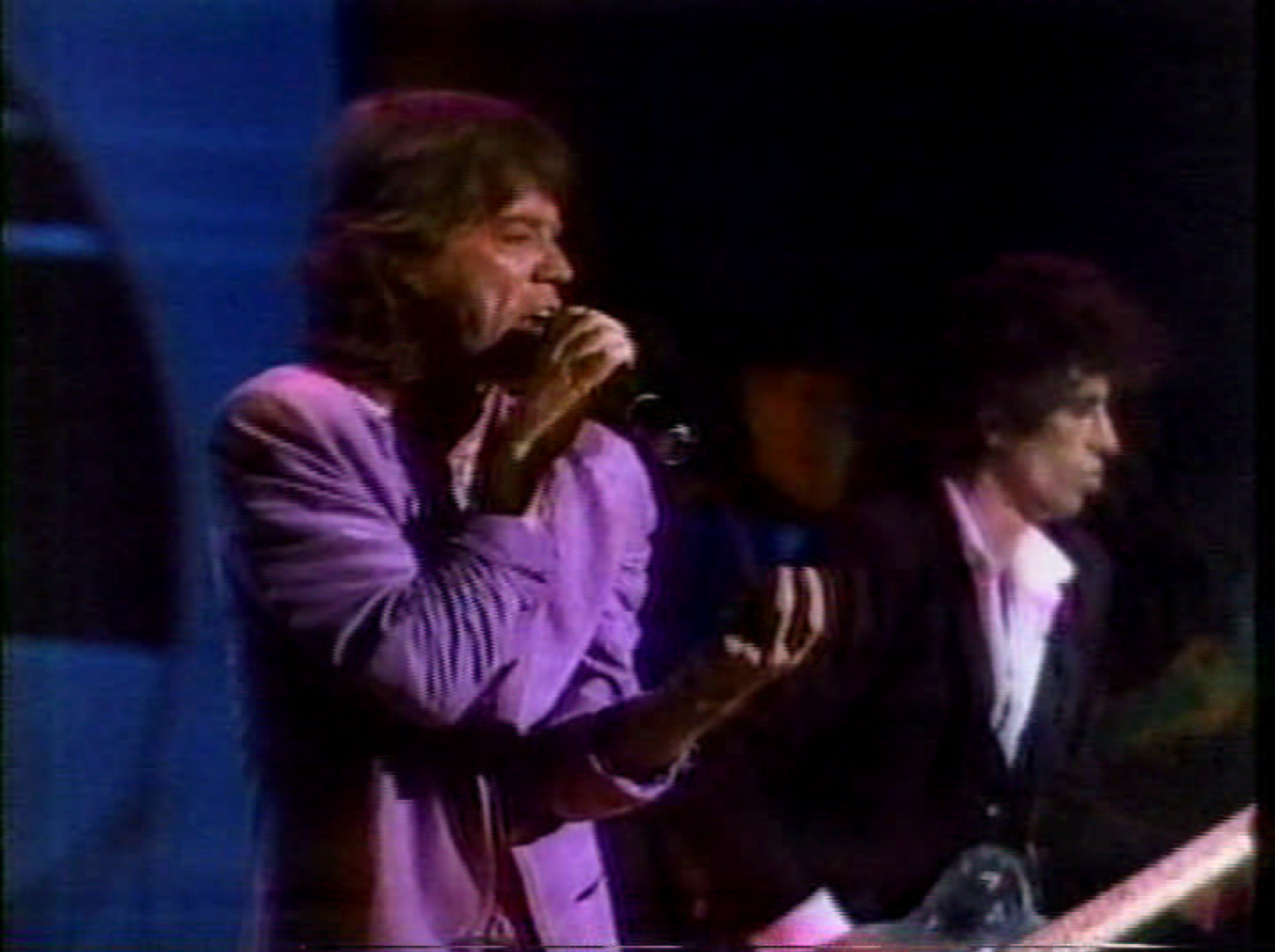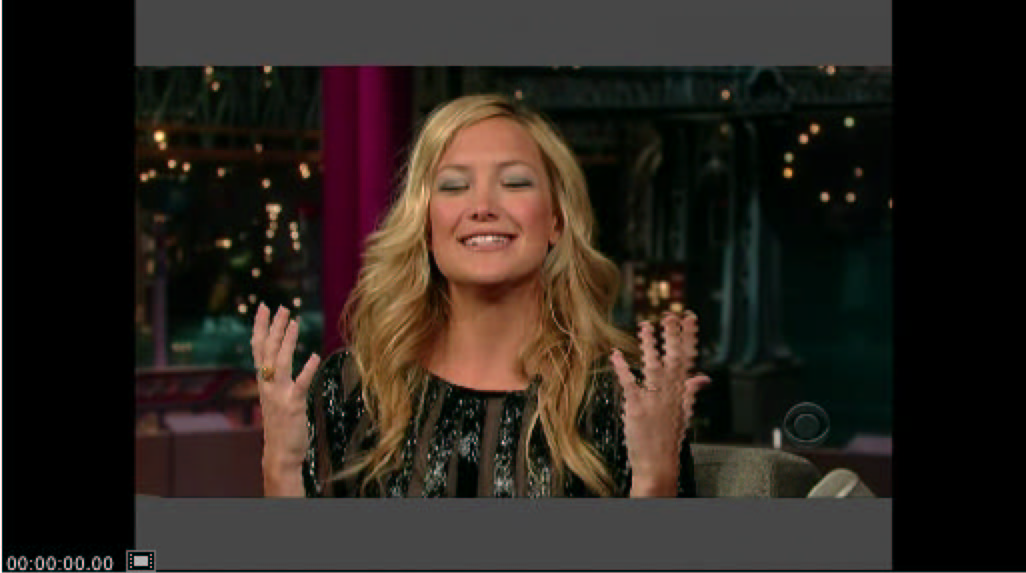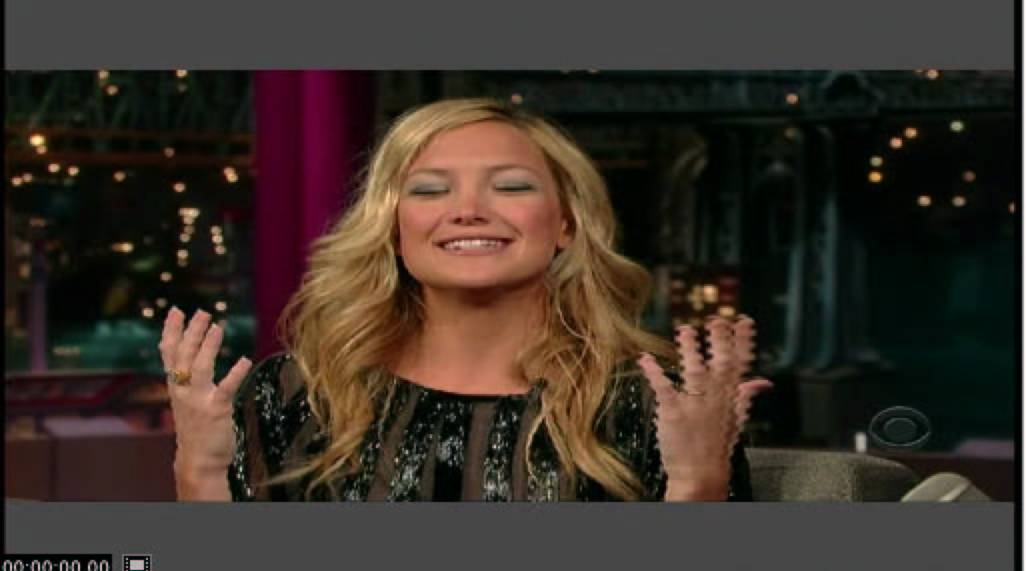I just purchased an upconverting Panasonic VCR/DVD Recorder for use with my DirecTV HR10-250 HD TiVo.
When recording off the HD TiVo, I downconvert to 480i and then record analog thru S Video to a DVD-RAM, and yes, I do connect the two audio channels as well.
I then use Toast 7.1 to extract the file off of the DVD-RAM, but here is the rub.
I want to crop the file down to about 720 X 400 so that it will chop off the letterboxing and create a DVD that will play in the full widescreen field of my HDTV.
The best solution would be if Toast could crop, so that I could eliminate an extra time consuming step...
I have tried using ffmpegX to crop, with no luck. I used DiVa to crop, but I have to convert it to some other format, such as 3ivx and then go back to MPEG2 in Toast with more time consumption, and DiVa seems to lose the audio. The DVD did look pretty good, even if it was silent.
Any help would be appreciated.
picture%204.pdf
+ Reply to Thread
Results 1 to 18 of 18
-
-
Sorry; I don't know a one-step method for you but here's a two-step process:
1. MPEG Streamclip - export to QuickTime (MJPEG-B, best quality, audio - uncompressed). You'll need plenty of HD space for this. You may crop within the export dialog.
2. ffmpegX to DVD (or Toast to DVD, etc.) -
Thanks for the MPEG Streamclip tip; it also allows for trimming as well as cropping:
It works on my sample 2 minute clip (with a slight bit of letterboxing, so I will have to tweak the aspect ratio a bit), but adds two steps, not just one: One to crop and then Toast has to reencode the uncompressed Video to MPEG-2.
Is there a way to crop/trim and save as MPEG-2, so that Toast does not have to reencode? I am using v7.1 of Toast, which at least fixed the bug that caused it to recognize some of these video files as music files.
This process is just too long to save high quality widescreen content on a consistent basis:
1. Record to DVD-RAM in realtime (which ties up my Tivo from watching anything else during this time, although at least I can watch over-the-air HDTV directly on my TV.
2. Use Toast 7.1's Media Bin to move the MPEG-2 file over to my Mac, by dragging the file over to the DVD-Video window.
3. Use MPEG Streamclip to crop/trim as you suggest.
4. Use Toast to reencode the resulting file and then burn to DVD-R.
Currently, I just burn to DVD-R on my DVD Recorder as a letterboxed 720X480 DVD and then I use the ZOOM functtion on my TV to blow it up to the 16X9 size of my HDTV.
Obviously, burning a cropped file to the DVD would be preferable from a visual sense, but I only have so much time in a day...
Any other thoughts?
Thanks again. -
I think the problem is going to be that MPEG2 is a multiplexed stream and the cropping you desire requires that you demux the stream in order to work on the video portion. (This is what the "export to QuickTime" does although it presents the two streams combined into one file.) You might see if exporting to m2v & mp2 will permit the crop to take place; then mux the resulting two streams and see if the mpeg2 file plays as you expect.
I'll play with it as well and report back. -
Nope. The demux is just that; it doesn't permit any alteration to the video stream except in the export to another format.
-
I guess the ultimate answer will be to buy a HD-DVD or Blu-Ray DVD Recorder, but not at current prices! I wonder if the HD DirecTV TiVo hobbles the HDMI output with some sort of DRM?
The aspect ratio problem: I am "recording" the DVD-RAM as a 4:3 letterboxed program. I then set MPEG Streamclip to export at 720X480 (unscaled) with a 60 pixel crop at both the top and the bottom to crop out the letterboxes. The resulting DVD from Toast using the file from MPEG Streamclip leaves a slight letterbox at the top and bottom. I will work on that...
Demuxing is another step, so I want to avoid that.
Next I am going to transfer a 1981 Rolling Stones concert from Hampton Gardens, Virginia (two hour concert that opens first with a one hour "cinema verite" backstage and with George Thorogood as the opening act) that I have on VHS tape to DVD (it was a "Pay-per-View" event over our local subscription TV channel; I rented an industrial Panasonic VHS, which had two channel audio [stereo recording/playback was not available to the consumer VHS market yet] and fed the video from the subscription TV box and the audio from the local FM station simulcast).
I thought that it might be the LAST Rolling Stones concert, since they were in their late 30's!!!?! HA HA HA Actually it turned out to be a great tape, and now I want to move it over to DVD, but I want to be able to chapter it at the commencement of each song. I wish I had that Black & White Rona Barrett clip of her interviewing Mick Jagger in the mid-60's and he is saying "I don't want to be singing 'Satisfaction' when I am 40!" so I could edit it into the concert just before Satisfaction...
I'll save it to DVD-RAM and move it over to the Mac with Toast and then use my Capty DVD software to author it (hopefully it will recognize the MPEG-2 file that Toast creates from the DVD-RAM) -
I'll check out Sizzle and see if it will help me with the Chapters problem.
Here is an interesting anomoly:
I recorded the first two hour Stones VHS tape to DVD-RAM at SP DVD speed (2 hours to one DVD). The disc, when played back in the DVD recorder, looks terrific, considering it is a 25 year old VHS tape.
Once I move the MPEG2 stream over to the Mac using the Media Bin in Toast, and then I play the resulting file in either Quicktime or VideoLan Player shows a tremendous amount of pixelization throughout the concert!?! The pixelization is permanent; that is, if I freeze frame or replay a segment, it has the same artifacts. Although I have not tried it, I assume that these artifacts will appear from any DVD that I author from this file.
I thought that Toast just pulls the resulting MPEG2 file off of the DVD-RAM and places it on my Hard Disk without any intervening reencoding. So, why then, am I getting the pixelization on the Mac, which, of course, renders my DVD/chaptering project useless. -
The "never re-encode" in Toast only works on files that are already in MPEG2. It's useful when making a disk from a bunch of VOBs from various sources, where Toast is creating menus, IFO files and such, but the core video is already in DVD format.
If you think about the nature of MPEG, I don't see how you could ever get around the need to re-encode. MPEG2 is highly compressed in both space and time, with relatively few complete frames stored. Anything that lets you view it at all, let alone edit it has to start by constructing individual frames from that compressed data. Those frames (other than key frames) don't exist as such in the MPEG stream. All that's there is a tiny amount of code that tells a MPEG chip how to create those frames. If all you're doing is working in the time dimension - trimming or joining chunks of footage - there are tools that can do that by cutting or joining the MPEG stream without altering any data between the cut/joins and timing them to where the the existing key frames are (which is why you can't do frame-accurate edits.)
However, if you do ANYTHING that alters the actual content of the frames, even something as simple as cropping out black, you've created a series of frames that are different from what is encoded in that MPEG stream. (That black space is definitely part of the encoded picture.) Therefore you must create a entirely new MPEG stream that represents what is in those new, altered frames . . . i.e. encoding.
I don't see how you can get around it.
PS: Have you explored leaving the MPEG alone and just playing with the settings in the IFO file? This would be like when you set a widescreen set to "Zoom" to get rid of letterboxing. This doesn't involve re-encoding. The IFO file just tells the DVD player how to display the video stream. It would be very quick to experiment on the IFO file with myDVDedit to see if you can create a disk that plays back the way you want. -
Letterbox/Aspect Ratio Problem:
Actually, I thought the files stripped off the DVD-R by Toast (in the Media Bin) are MPEG-2 (I had hoped that the DVD-VR files off the DVD-RAM were MPEG-2, but that may be too much to hope for). I do have "never encode" turned on, but it reencodes anyway.
Thank you for the explanation why any cropping would require a re-encode; that makes sense! I am not familiar with myDVDedit, but will download it and try fooling around with the IFO file as you suggest. I know nothing about DVD structure and the IFO file; hopefully there are some instructions.
I will be out of town from tomorrow through next Tuesday, so my tinkering may have to wait til then.
Rolling Stones Concert Problem:
I keep getting hung up at about 25% on all attempts to author a DVD with this video stream. It is right where the Colisium goes dark for the introduction on stage of the Rolling Stones. MPEG Streamclip tells me there are hundreds of breaks, but using "timecode fix" does not seem to help. Even Streamclip gets hung up at that point when I try to encode it as uncompressed Apple-B. -
-
There are some discontinuities in a video streams recorded off-air onto a RAM disc that seem to be beyond Streamclip or anyone else's ability to fix.
I used to run into this problem all the time with series like Sopranos and Six Feet under on HBO. I was recording them to RAM discs from the HD feed (down-converted by my Sat box to real good 480i). I would then transfer them to my computer to fix the widescreen flag and burn them to DVD-R as a keeper.
On HBO there is always a noticable hiccup between "Last week on . . . " and the start of the new episode. This is where the aspect ratio switches from 4:3 letterbox to 16:9 WS. (There's a similar glitch at the end, when they go to "next week on . .. . ")
Streamclip would always report these as timecode breaks, but would always say that it had fixed them after I ran that routine. However, when I then tried to re-mux these files in Toast, it would always hang at exactly those points and report an unfixable error (something like code 1866). I was never able to overcome this using RAM discs, and the only work-around was to remove the "last week/next week" bits and just burn the widescreen episode.
Interestingly, this wasn't an issue when I switched to DVD-R discs as the transfer medium. When I realized that DVD-R blanks were down to 20 cents each, I got lazy: I would trim the ends of each episode on the hard disk of my DVD recorder; put 2 episodes and a menu on a DVD-R via "high-speed dub" (i.e. a bit-for-bit digital transfer from Hard disk to DVD-R); copy this onto the computer and burn a new disk with the widescreen flag set.
Going this route, there was no problem with the "last week/next week" bits. Since the actual MPEG file is supposedly the same on a RAM and a DVD (just the data storage structure is different) all I can figure is that the firmware in the DVD recorder is more robust in its ability to handle timecode breaks than computer software like Toast. (Going the DVD-R route, all that Toast was doing was re-buring a complete, encoded and muxed VIDEO_TS folder where I'd made a slight alteration in the IFO files.)
Now that I've gotten comfortable using cheap DVD-R blanks as a one-time throw-away transfer medium (why not? we've been doing it with CD-Rs for years) I just never use RAMs anymore. Too much hassle all around. -
As far as I recall, fixing timecode breaks does not mean fixing the file itself SC just memorizes them for the editing session. You have saved the file under a different name, haven't you?Streamclip would always report these as timecode breaks, but would always say that it had fixed them after I ran that routine.
I might be wrong...
Cheers,
Joachim
Similar Threads
-
Stream type mismatch - 19023 with DVDit Pro 6 Redux
By jakewoodblues in forum Authoring (DVD)Replies: 0Last Post: 21st Apr 2010, 18:24 -
VRO to VOB Redux
By sambat in forum Newbie / General discussionsReplies: 4Last Post: 18th May 2009, 18:20 -
Pet Peeve - Movie Redux
By rkr1958 in forum Newbie / General discussionsReplies: 11Last Post: 19th Nov 2008, 08:37 -
Understanding Gspot and Codecs Redux
By neumannu47 in forum Newbie / General discussionsReplies: 3Last Post: 5th Feb 2008, 22:43 -
dvd recorder with dvd-ram, no hdd, gemstar tv guide, atsc or ntsc tuner.
By 84transam in forum DVD & Blu-ray RecordersReplies: 4Last Post: 5th Nov 2007, 20:55





 Quote
Quote

